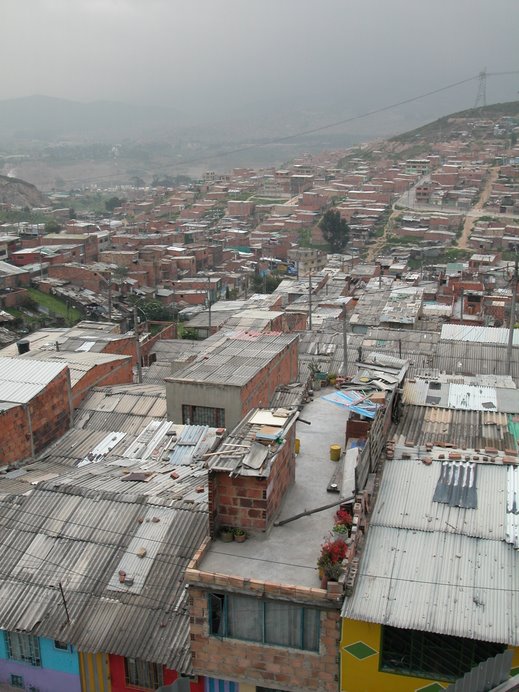 |
| Children play on a wooden iguana in Pombo's childhood home. |
One hundred years (and a few odd days) ago,
Colombian poet, translator and diplomat Rafael Pombo died at age 79.

Pombo is remembered as a children's writer - which he certainly was - and you can visit
his childhood home, now the Rafael Pombo Foundation on 10th St. in La Candelaria, beside the
Teatro Colon. The house, built in 1833, does workshops for groups of schoolchildren and is full of colorful characters from Pombo's stories, which include
Rinrin el Renecuajo (Rinrin the Tadpole), La Pobre Viejecita (The Poor Old Woman) and Simon el Bobito (Simon the Fool).
Pombo is less remembered for his work as diplomat in New York, where he lived for 17 years and translated and adapted Anglo Saxon stories into Spanish, or that back in Bogotá he founded two newspapers and even wrote opera.
 |
Pombo's home, in the foreground,
and the Teatro Colon beyond it. |
Rinrin the Tadpole tells the story of a tadpole - actually a frog - who goes partying with his friend the mouse. But, because they didn't listen to momma frog's admonitions, they end up being eaten by a cat and a duck. So, let that be a lesson to you, young people! (But it's a lesson lost, judging by young Colombians' partying habits.)
 |
| Characters from Pombo's stories now populate his home. |
 |
| A doorway and garden in Pombo's home. |
The Poor Old Woman 'who had nothing to eat, except for meats, fruits, sweets, cakes, bread, eggs and fish' and had noplace to live 'except for a big house with garden and garden.' And so it goes, ending with a plea to God to 'let us enjoy the poverty of this poor woman and die from the same afflliction.'
Witty and entertaining,
The Poor Old Woman could also be seen as a lesson for Colombia - a suffering, afflicted nation with tremendous riches.
But it is Pombo's darker and even anguished passages which I find more interesting. He gives a hint of existential despair in
El Bambuco, which begins with an appeal to
'excorcise the tedium of this miserable life' which God responded by
'providing a bambuco', or traditional Colombian dance related to the European waltz. Pombo ends the poem by saying that his greatest ambition would be to have composed el bambuco.

That poem's happy ending contrasts with his most famous existentialist piece,
La Hora de Tinieblas (The Hour of Darkness), in which life is worse than a burden: '
Why was I born? Who forces me to suffer? Who created this terrible law of being and suffering?'
Predictably, that loss of faith got Pombo in trouble with the church. But it doesn't appear to have cast a shadow over the children having fun in his old home in La Candelaria.
Find 18 of Pombo's most famous poems
here.
 |
| Rafael Pombo's portrait in the National Museum in Bogotá. |
 |
| El Bambuco |
 |
| Calle 10 is one of La Candelaria's most historic and best-preserved streets. |
 |
| Playing with a giraffe. |
By Mike Ceaser, of
Bogotá Bike Tours, which also has La Candelaria's largest collection of used books in English, French, German, Dutch and other languages for sale and exchange.


















































